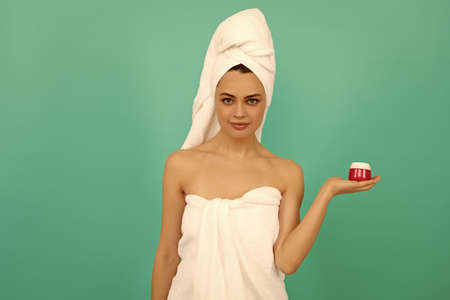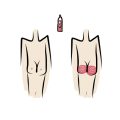Introduction: Navigating the World of Men’s Fragrance
For British gentlemen, personal grooming is more than a daily ritual—it’s a statement of style, heritage, and self-respect. Central to this tradition is the artful choice of fragrance. Yet, amidst shelves brimming with aftershave, eau de toilette, and cologne, even the most discerning can feel adrift. Why does it matter which you select? In the UK, where understated elegance and olfactory subtlety are highly prized, understanding these differences isn’t just a nod to sophistication; it’s essential for making the right impression, whether at the office, during a night out in Soho, or at a family Sunday roast. This guide unpacks what sets each fragrance type apart and why those distinctions are particularly meaningful in British grooming culture—a realm where history meets modern flair, and every spritz tells a story.
2. What is Aftershave?
Aftershave holds a special place in the classic British grooming ritual, embodying both tradition and practicality. Unlike fragrances designed solely for scent, aftershave serves a specific purpose immediately following the act of shaving. At its core, aftershave is formulated to soothe the skin, reduce irritation, and prevent infection from minor nicks or cuts—a must-have for any gent who values a clean, well-cared-for complexion.
The Purpose of Aftershave
Aftershave is more than just a pleasant finishing touch; it plays an essential role in post-shave skincare. Shaving can leave the skin sensitive and prone to redness or bumps. Traditional British barbers have long relied on aftershave to calm the skin, close pores, and deliver antiseptic properties that ward off bacteria.
Common Ingredients Found in Aftershave
| Ingredient | Purpose |
|---|---|
| Alcohol (often denatured) | Disinfects and tightens pores |
| Aloe Vera | Soothes and hydrates irritated skin |
| Witch Hazel | Reduces inflammation and acts as a mild astringent |
| Glycerin | Moisturises without leaving residue |
| Essential Oils (such as sandalwood or cedarwood) | Adds subtle scent and further calms skin |
The British Shaving Tradition
In Britain, the ritual of shaving has always been steeped in heritage—from the use of quality brushes and razors to the application of a bracing aftershave splash. Classic aftershaves, like those found in storied London barber shops, are often light and refreshing, with understated scents that don’t overpower but instead complement one’s natural aroma or chosen fragrance. For many British men, aftershave is not just about hygiene—it’s an everyday mark of sophistication and self-care.

3. Defining Eau de Toilette: Fragrance Strength and Suitability
Eau de toilette, often abbreviated as EDT, occupies a distinctive place in the spectrum of mens fragrances. In terms of concentration, eau de toilette typically contains between 5% and 15% aromatic compounds diluted in alcohol, making it lighter than eau de parfum but notably stronger than aftershave. This balance provides a refreshing scent that is noticeable without being overpowering, an ideal middle ground for those who desire more longevity and projection than aftershave can offer but without the intensity of parfum.
Fragrance Concentration Comparison
| Type | Aromatic Concentration | Longevity | Typical Use |
|---|---|---|---|
| Aftershave | 1-3% | Up to 2 hours | Post-shave skin soothing |
| Eau de Toilette (EDT) | 5-15% | 3-6 hours | Daytime fragrance, everyday wear |
| Cologne | 2-4% | Up to 2 hours | Light refreshment, layering scent |
The British Take on Daytime Wearability
In the UK, eau de toilette has long been regarded as the go-to option for daytime scenting, prized for its subtlety and sophistication. British style leans towards understatement; overbearing fragrances are generally frowned upon in both social and professional settings. EDT’s moderate projection makes it perfectly suited for daily office environments, business meetings, or casual outings. Its versatility is another key reason for its popularity among British men—whether you’re heading to a café in Soho or commuting on the Underground, a few spritzes of your favourite EDT will keep you smelling fresh yet discreetly refined throughout the day.
4. Cologne Explained: More Than Just a Scent
Cologne holds a unique place in the world of fragrance, especially from a British perspective. Historically, the term “cologne” originates from the city of Cologne in Germany, where Eau de Cologne was first created in the 18th century. In the UK, however, its meaning has evolved over time and is often used more broadly to describe a variety of lighter men’s fragrances.
The Historical Significance of Cologne
Originally, Eau de Cologne was celebrated for its refreshing citrus-based scent and was valued for its invigorating qualities. It became a symbol of refinement among European aristocracy, including British nobility. Over the centuries, cologne transitioned from an exclusive luxury to a staple in daily grooming routines.
Scent Profile and Usage
Traditional colognes are characterised by their light, crisp scent profiles—think citrus notes like lemon and bergamot, balanced with herbal undertones. In Britain today, cologne is typically seen as ideal for daytime wear or warmer weather due to its subtlety and freshness. Unlike aftershave or heavier scents such as Eau de Parfum, cologne is appreciated for being understated yet sophisticated.
Linguistic Distinctions in the UK
The word “cologne” can be somewhat ambiguous in British English. While it technically refers to fragrances with a lower concentration of perfume oils (usually around 2-5%), many Brits use “cologne” informally to mean any male fragrance. This differs from American English, where “cologne” almost exclusively denotes men’s scents regardless of strength.
Key Differences at a Glance
| Term | Perfume Oil Concentration | Typical Use in the UK | Cultural Connotation |
|---|---|---|---|
| Cologne | 2-5% | Light daytime scent; often used generically for men’s fragrances | Freshness, approachability, everyday sophistication |
| Eau de Toilette | 5-15% | Mainstream choice for both day and evening; more noticeable than cologne | Versatility, modern style |
| Aftershave | 1-3% | Post-shave application; soothing skin and leaving subtle fragrance | Practicality, tradition, masculinity |
Understanding these distinctions helps ensure you select the right product for your needs—whether you’re seeking something fresh and discreet for daily use or aiming to make a statement with a more robust fragrance. In Britain, choosing your scent remains both a personal ritual and a subtle reflection of style.
5. Key Differences at a Glance
To help you navigate the world of men’s fragrances, here’s a straightforward comparison of aftershave, eau de toilette, and cologne, focusing on what truly matters to British gents: strength, longevity, typical usage, and price points on the UK high street.
| Product Type | Strength (Concentration) | Longevity | Typical Usage | Average Price (UK) |
|---|---|---|---|---|
| Aftershave | Low (1-3% perfume oil) | 1-2 hours | Post-shave skin soothing, mild scent for close-contact settings | £10–£30 per 100ml |
| Eau de Toilette (EDT) | Medium (5-15% perfume oil) | 3-5 hours | Everyday wear; suitable for work and social occasions | £25–£70 per 100ml |
| Cologne (Eau de Cologne) | Mild to Medium (2-4% perfume oil; in the UK, often refers to lighter scents) | Up to 2 hours | Refreshing top-up throughout the day; summer favourite | £15–£50 per 100ml |
This side-by-side outline makes it easy to select the right product for your needs—whether it’s the quick comfort of an aftershave after a close shave, the lasting impression of an eau de toilette for daily life in London or Manchester, or the revitalising splash of cologne during a warm British summer. Keep these factors in mind when you next browse your local Boots or department store fragrance section.
6. British Grooming Rituals and When to Use Each
Grooming is an integral part of British culture, balancing tradition with modern sensibilities. Understanding when to use aftershave, eau de toilette, or cologne can elevate a gentleman’s routine from ordinary to distinctly refined. Here’s how British men typically incorporate these fragrances into their daily lives, formal events, and social gatherings.
Daily Life: A Subtle Approach
For the everyday routine, subtlety is key. Aftershave is favoured immediately post-shave, not only for its soothing properties but also for its light scent that won’t overwhelm in close quarters such as the office or public transport. Eau de toilette may be chosen on days when one desires a touch more presence without being overbearing—perfect for meetings or casual lunches.
Formal Events: Lasting Impressions
When attending weddings, business functions, or black-tie affairs, British men often reach for eau de toilette or cologne. These offer greater longevity and projection, ensuring a polished presence throughout the event. Typically, cologne’s richer notes are reserved for evening occasions or autumn/winter events, while lighter eau de toilettes suit daytime gatherings or summer dos.
Social Settings: Personal Expression
Pubs, dinner parties, and nights out call for a fragrance that reflects personal style yet respects communal spaces. Many opt for a spritz of eau de toilette before heading out, while those looking to make a statement may layer with cologne—mindful not to overpower the room. Aftershave might make a discreet appearance after freshening up at home before an informal meet-up.
Quick Reference Table: When to Use Each Product
| Setting | Aftershave | Eau de Toilette | Cologne |
|---|---|---|---|
| Daily Routine | ✔️ (post-shave) | ✔️ (light application) | |
| Work/Office | ✔️ (subtle scent) | ✔️ (moderate scent) | |
| Formal Event | ✔️ (daytime/formal) | ✔️ (evening/luxurious) | |
| Social Gathering | ✔️ (informal) | ✔️ (versatile) | ✔️ (if well-balanced) |
Expert Tip:
A true British gent knows that less is often more—a restrained application shows confidence and respect for others’ space. The art lies in choosing the right product for the occasion and applying it with finesse.
7. Conclusion: Choosing the Right Scent for You
When it comes to selecting between aftershave, eau de toilette, and cologne, understanding their differences is key—especially within the British context, where traditions and personal style play an essential role in grooming choices. Each product offers a distinct concentration of fragrance oils, longevity, and intended use. To help you make an informed decision, consider the following table:
| Product | Main Purpose | Typical Fragrance Strength | Longevity | British Usage Tip |
|---|---|---|---|---|
| Aftershave | Soothes skin post-shave | Light | 1-2 hours | Ideal for daily shaving routines; subtle scent for close encounters. |
| Eau de Toilette | Everyday fragrance | Moderate | 3-5 hours | A classic choice for work or social occasions; versatile and not overpowering. |
| Cologne | Lighter daytime scent or layering option | Mild | Up to 2 hours | Perfect for summer days, gym sessions, or quick refreshes on the go. |
Summing up: British fragrance etiquette values subtlety and appropriateness for the occasion. Aftershave suits those seeking a gentle post-shave touch, while eau de toilette offers a balanced signature scent without overwhelming others—a must for commuting on the Tube or attending meetings. Cologne, lighter still, is best reserved for informal settings or a midday uplift. Ultimately, choosing the right fragrance product should reflect your lifestyle, personal taste, and the setting in which youll wear it. Dont hesitate to experiment with different scents across seasons and occasions; after all, finding your perfect match is part of the quintessential British grooming journey.


